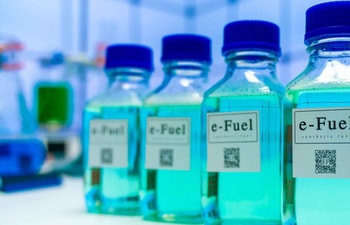The US government has announced $291m to support the production of sustainable aviation fuel (SAF), with 36 projects set to benefit from the capital.
Part of the Inflation Reduction Act (IRA), the funding was announced by the Federal Aviation Administration (FAA) to help achieve Net Zero greenhouse gas emissions from aviation by 2050 as part of President Biden’s Investing in America Agenda.
Around $244.5m of the funding will go towards 22 different projects that focus on the production, transportation, blending or storing of SAF, and for related studies.
It is hoped that the effort will expand SAF production, enhance supply chains, and increase accessibility.
The rest of the capital, $46.5m, will help 14 additional projects to develop, demonstrate or apply low-emissions aviation technologies. This effort will also increase SAF use.
US Secretary of Transportation Pete Buttigieg, said, “These grants will help put the world on a path toward decarbonising aviation while fostering domestic economic growth and ensuring the US retains its global leadership in aviation.”
Two projects set to benefit from the funding are Gevo’s existing Minnesota-based fuel facility that will be converted to a fully integrated alcohol-to-jet facility for SAF production and a University of Illinois Urbana-Champaign test facility that will mature high-power electrified airplane technologies.
Others that will receive a financial cut include established and start-up fuel producers, fuel logistics and supply chain companies, engine, aircraft, and component manufactures, state and local governments, airport authorities, and universities.
Laurence Wildgoose, FAA Assistant Administrator for Policy, International Affairs and Environment, described the projects as instrument in advancing environmental and economic sustainability goals.
“All grant recipients are based in the U and are working towards putting the aviation sector on a path to achieving Net Zero greenhouse gas emissions.”
Prior to the introduction of the Inflation Reduction Act being introduced in 2022, in September 2021, the US launched the Sustainable Aviation Fuel Grand Challenge to help scale-up new technologies to produce SAFs on a commercial scale.
Ahead of several other emissions reduction targets, the challenge wants the US to enough SAF to meet 100% of aviation fuel demand by 2050. As a stepping stone, it also sets a target for the region to produce at least three billion gallons of SAF per year by 2030.
The challenge was launched by the Department of Energy (DOE), the Department of Transportation (DOT), and the US Department of Agriculture (USDA). And the goals laid out in the deal were sealed with a government-wide Memorandum of Understanding (MoU) that is aimed at cutting the cost of SAF.
According to the US Energy Information Administration (EIA), production capacity of SAF in the US could increase from around 2,000 barrels per day (b/d) to nearly 30,000 b/d in 2024 if all announced capacity additions come online.[1]






